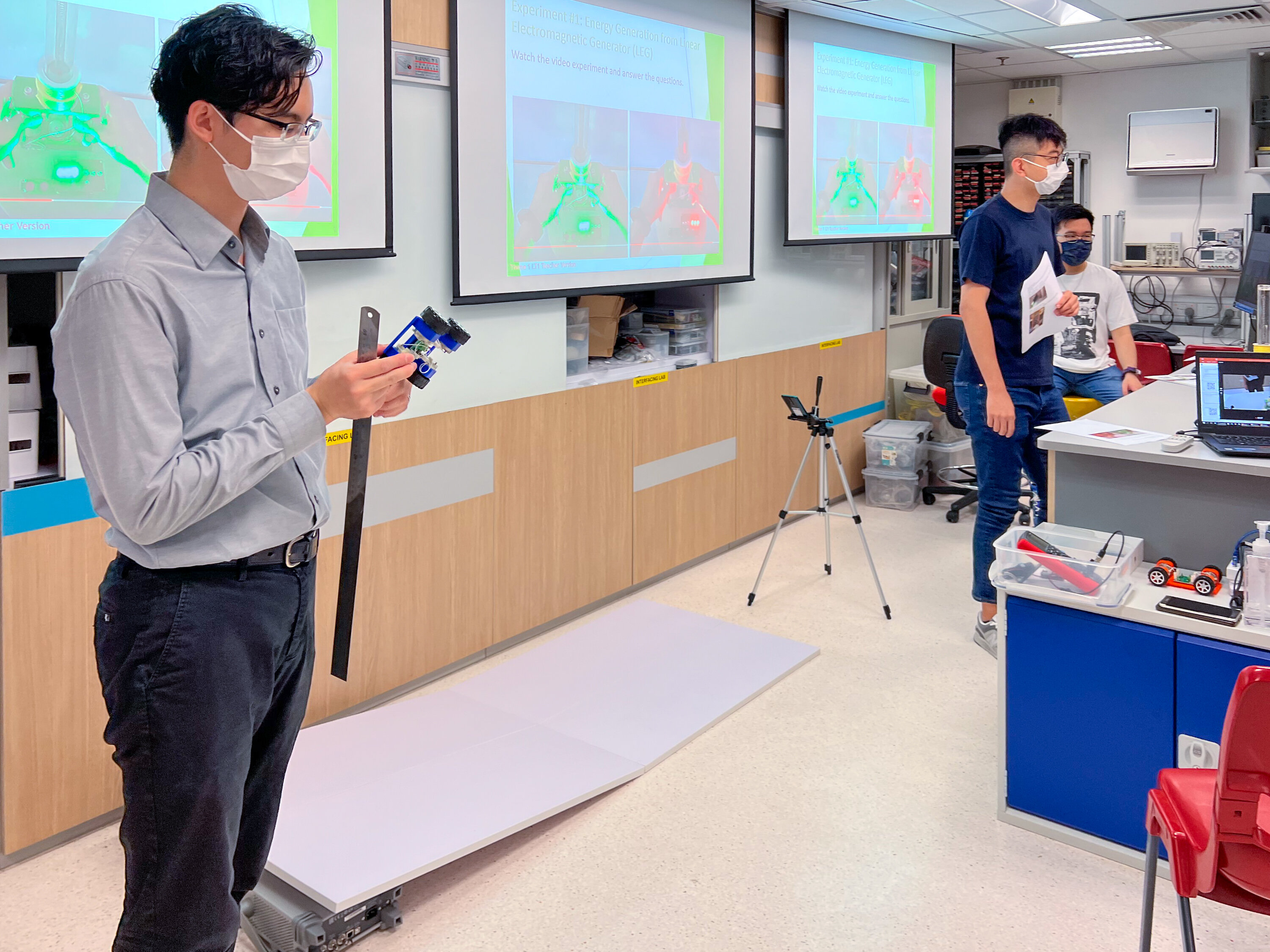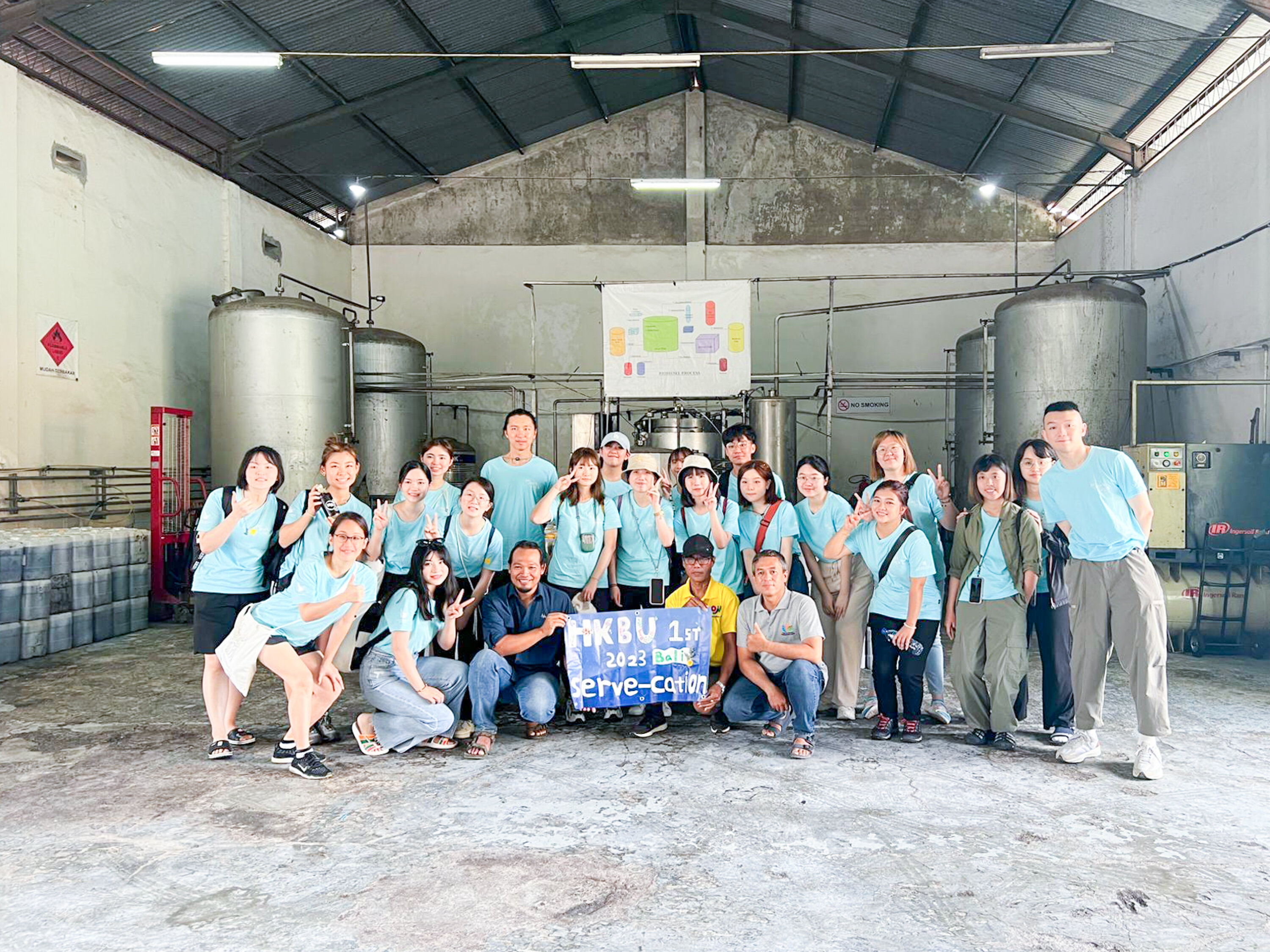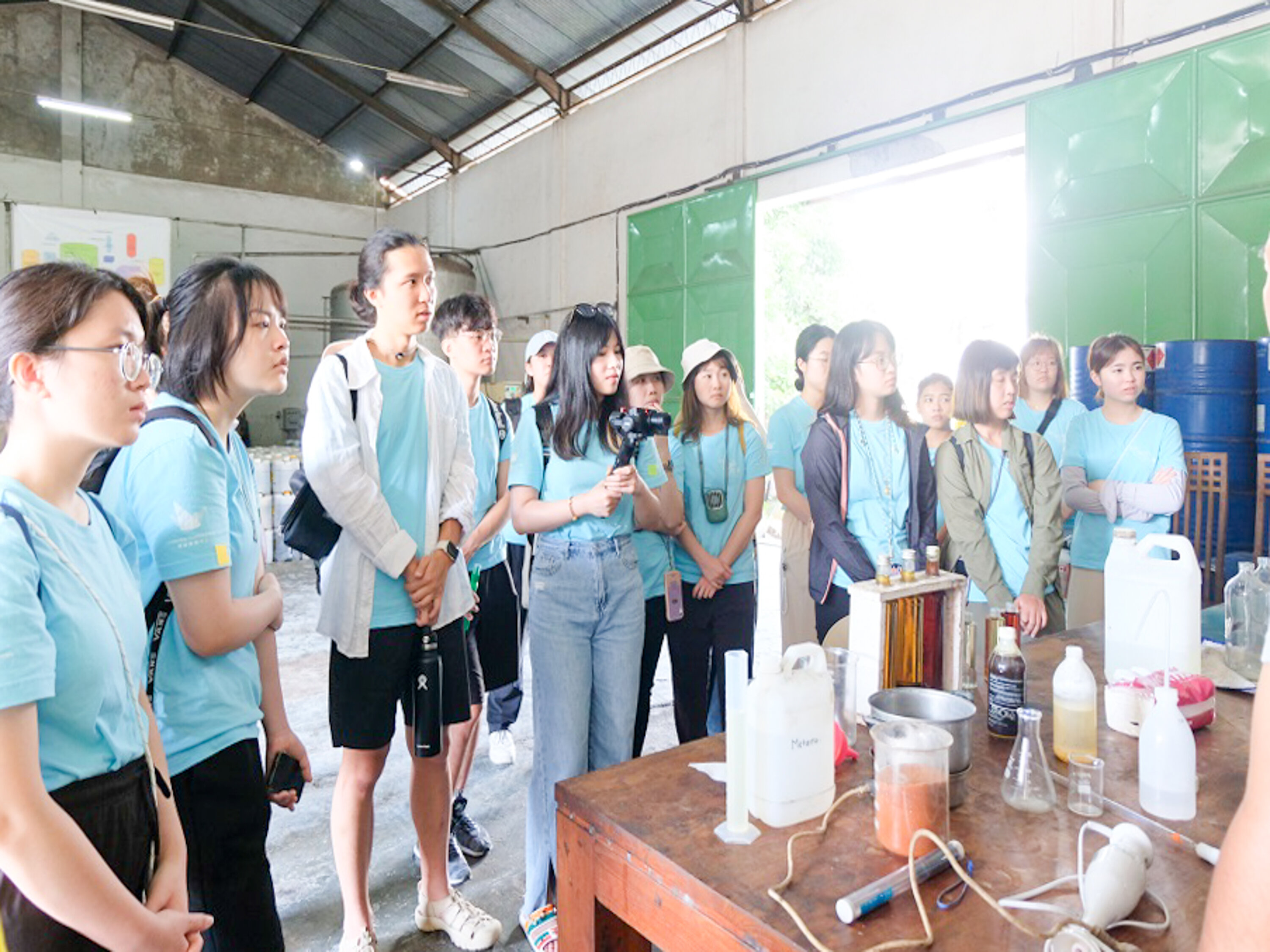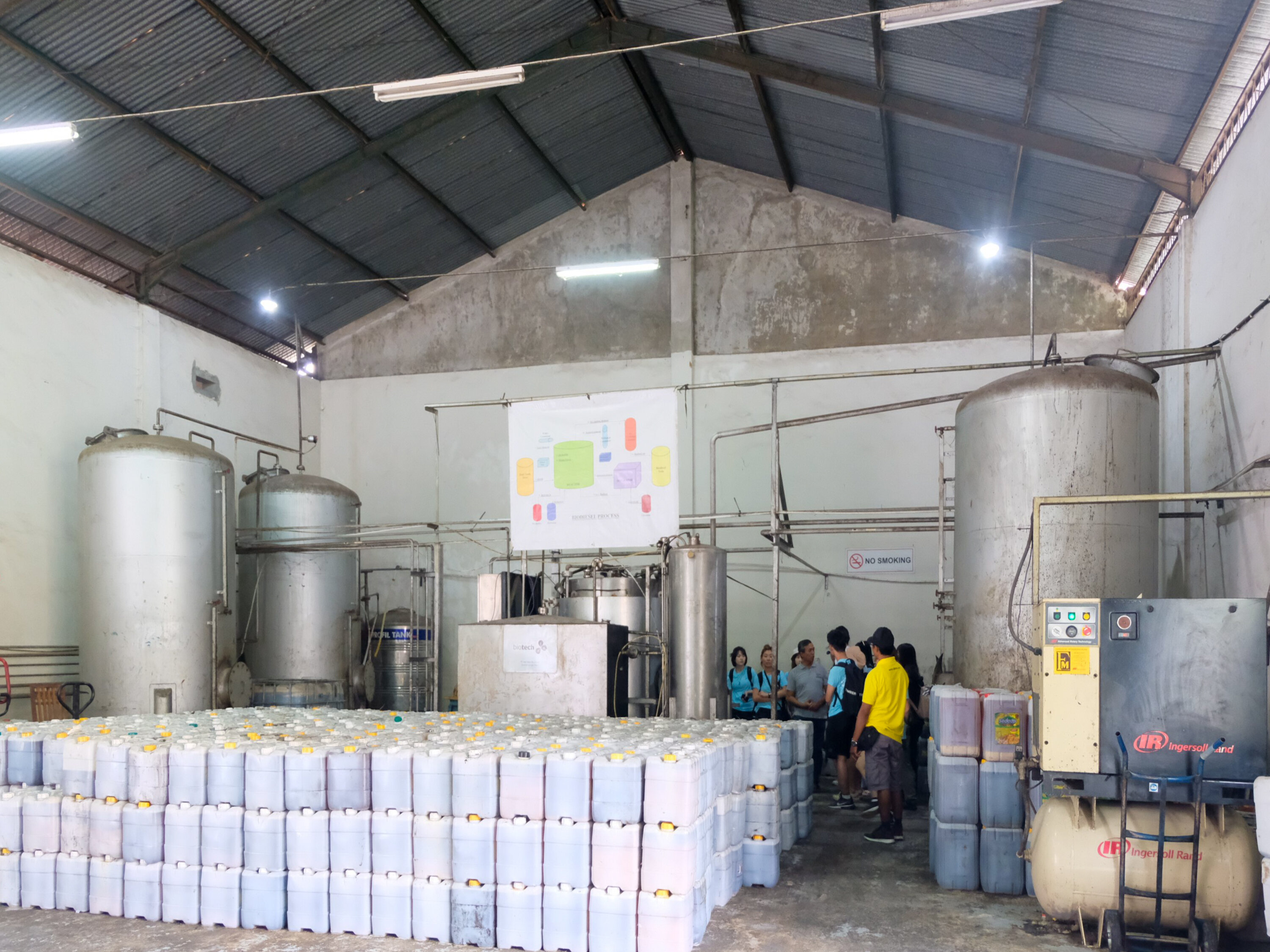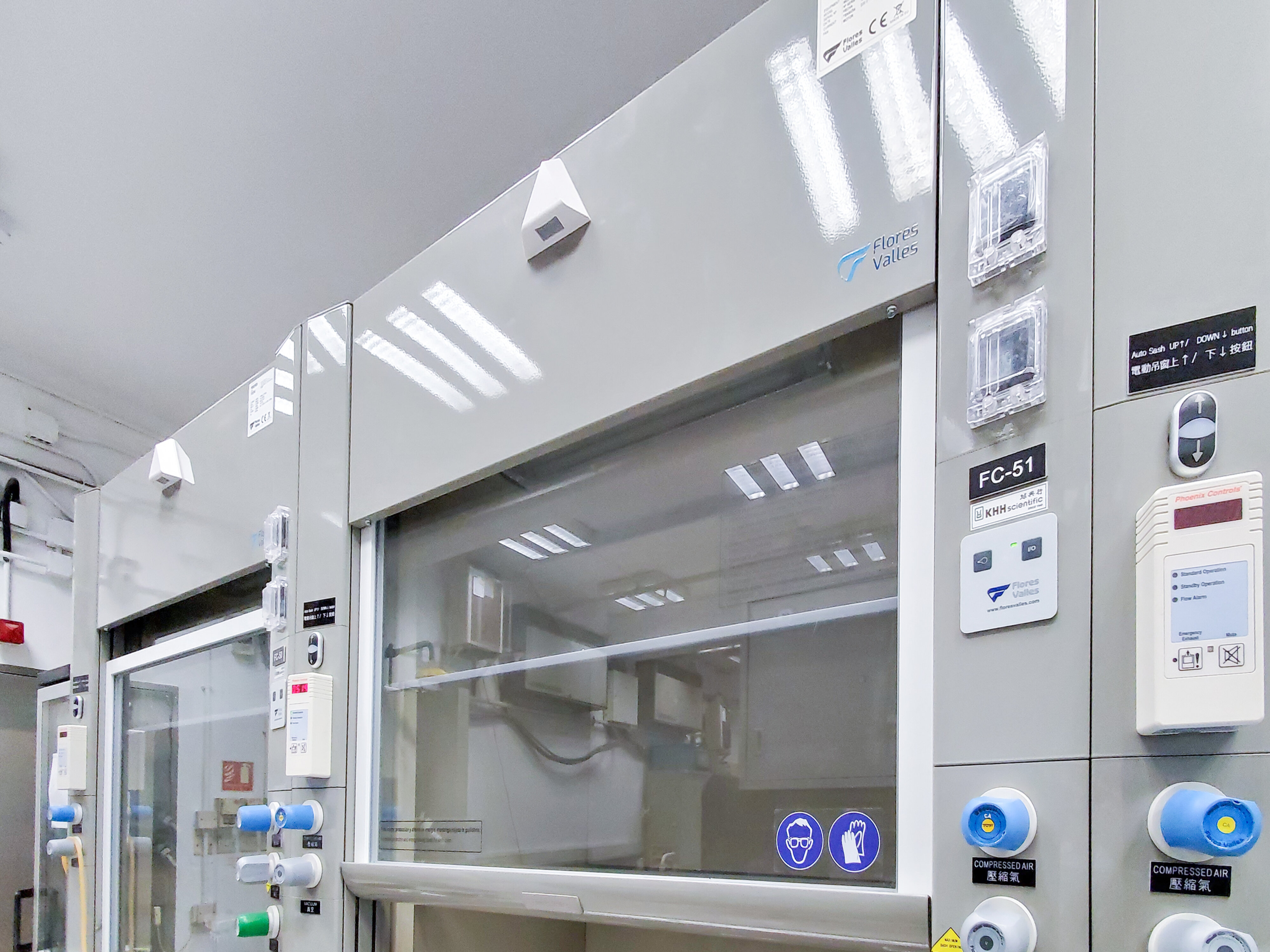SDG 07: Affordable and Clean Energy
Renewable energy technology
In the service-learning course conducted by Dr Chan Mau-hing, lecturer of Department of Physics, HKBU students taught the principles of renewable energy through physics experiments to students from St Teresa Secondary School and Hong Kong Teachers’ Association Lee Heng Kwei Secondary School. Additionally, to increase the impact and foster deeper participation in the field of renewable energy education, students created instructional films together. They learnt how crucial their efforts are in preserving natural resources and creating a sustainable future together.
Serve-cation to Bali
Organised by the Office of Student Affairs, a group of students participated in the Serve-cation programme and visited a non-profit organisation in Bali, Indonesia, committed to providing sustainable solutions to used cooking oil recycling. The students learnt how the organisation collects used cooking oil from commercial restaurants and transforms it into high-quality biodiesel that can be used as fuel for vehicles; how the oil can be upcycled to produce commercial products like candles; how to differentiate between lowquality and high-quality biodiesel; and how the pandemic had affected the organisation’s recycling operations due to the decreased volume of used cooking oil collected from restaurants. The use of biodiesel helps mitigate the adverse impact of climate change, reduce greenhouse gas emissions, and minimise health risks, while reducing poverty in Bali. Despite the challenges posed by the pandemic, the organisation remains committed to providing long-term sustainable solutions for used cooking oil recycling.


Regional revenues of solar and wind generation in Texas
Centre for Sustainable Development Studies and Department of Accountancy, Economics and Finance
Authors: Chi Keung WOO, Jay ZARNIKAU, Chen-hao TSAI, Kanghua CAO, Han Steffan QI, Raymond LI*
*Corresponding author
Deep decarbonisation in response to climate change requires the construction of solar plants and windfarms to displace carbonemitting power plants fuelled by coal and natural gas. Working with a team of international researchers, Dr Woo and Dr Cao used a large sample of 15-minute market data from Texas to estimate regressions that reveal how regional solar and wind revenues move with such fundamental drivers as natural gas price, system demand, nuclear energy, solar energy, and wind energy. The regression results thus obtained serve to project that incremental solar and wind capacity expansion of up to 55% and 35% respectively may have occurred as a market-based outcome without further government intervention for the 2023- 2042 period. The policy implication of this finding is the deceleration of Texas’s rapid and large-scale development of intermittent solar and wind generation resources that adversely affects the Texas electric grid’s real-time operation and system reliability.


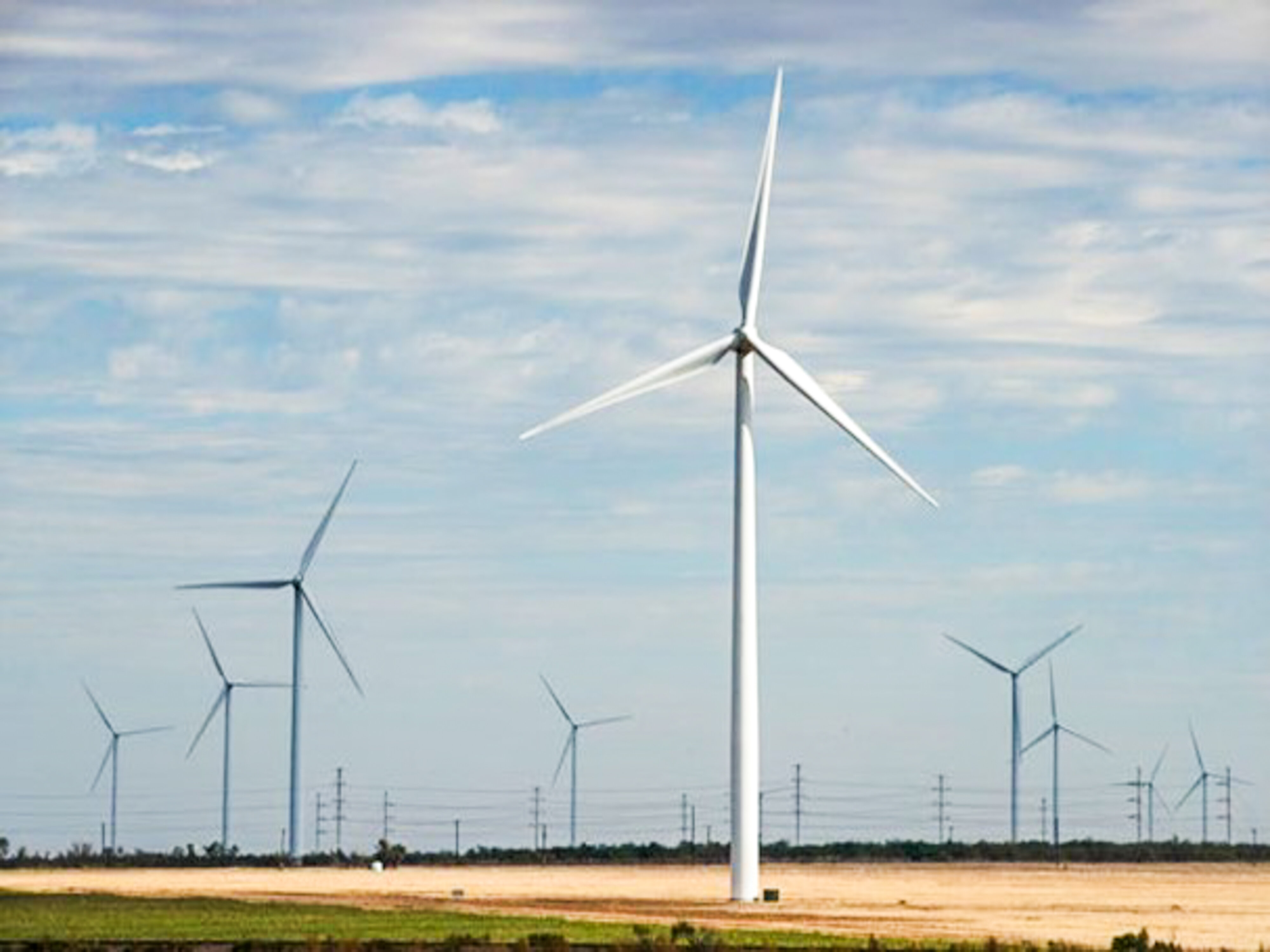

Efficient and stable polymer solar cells: From new materials, built-in potential and interfacial engineering perspectives
Department of Physics
Corresponding authors: ZHU Furong, WANG Shenghao
This research contributes to affordable and clean energy by developing high-performance semi-transparent organic solar cells (ST-OSCs) that generate electricity. These ST-OSCs have the potential to provide clean and sustainable energy solutions for various applications, such as self-powered greenhouses and building-integrated photovoltaic systems. By achieving a record-high power conversion efficiency (PCE) of 15.2% and a high average visible transmittance (AVT) of 32%, these cells offer a promising option for affordable and clean energy generation. Implementing such technologies can help achieve the SDG 7 target of ensuring universal access to affordable, reliable, and modern energy services, while increasing the share of renewable energy in the global energy mix.
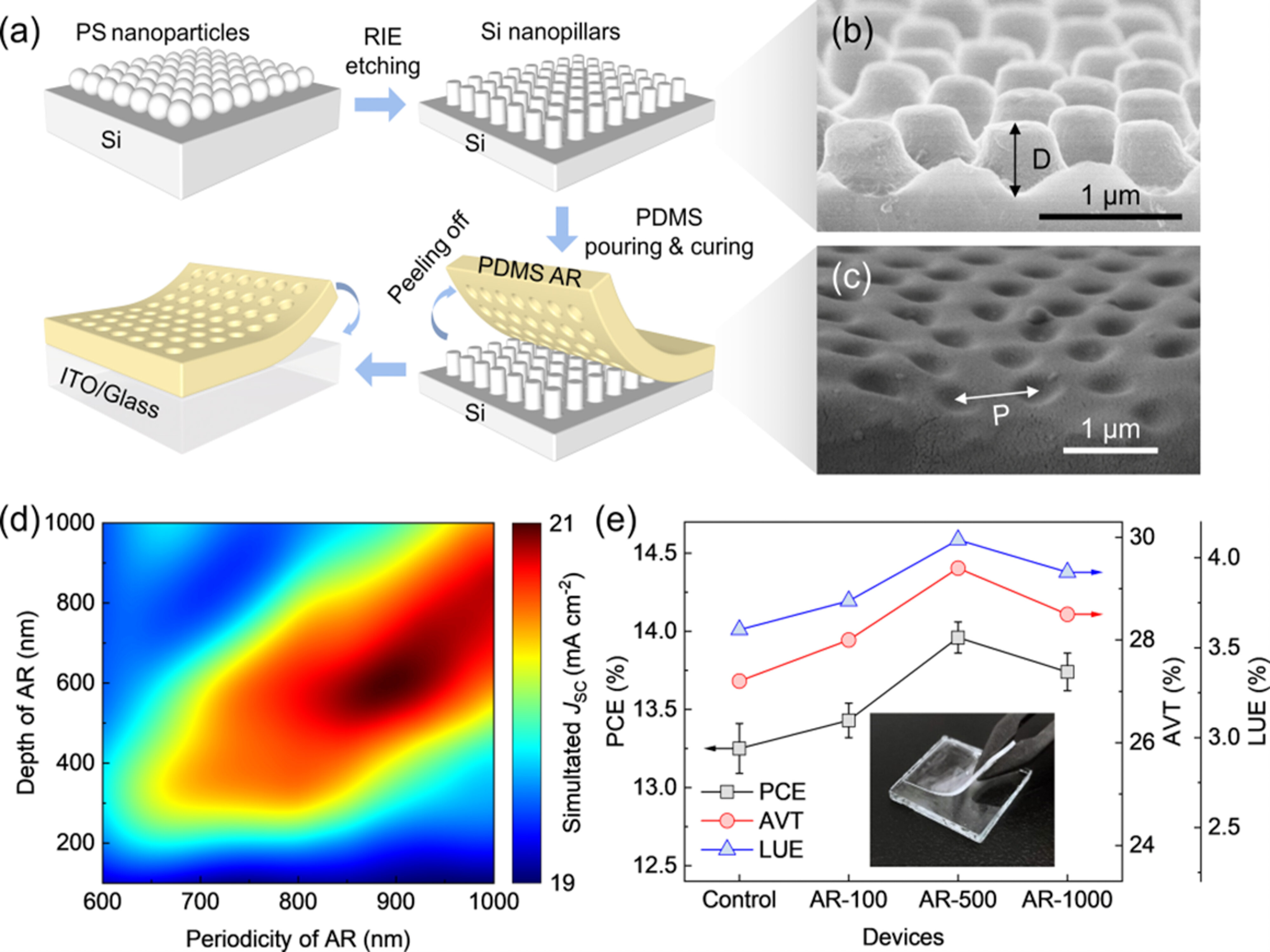

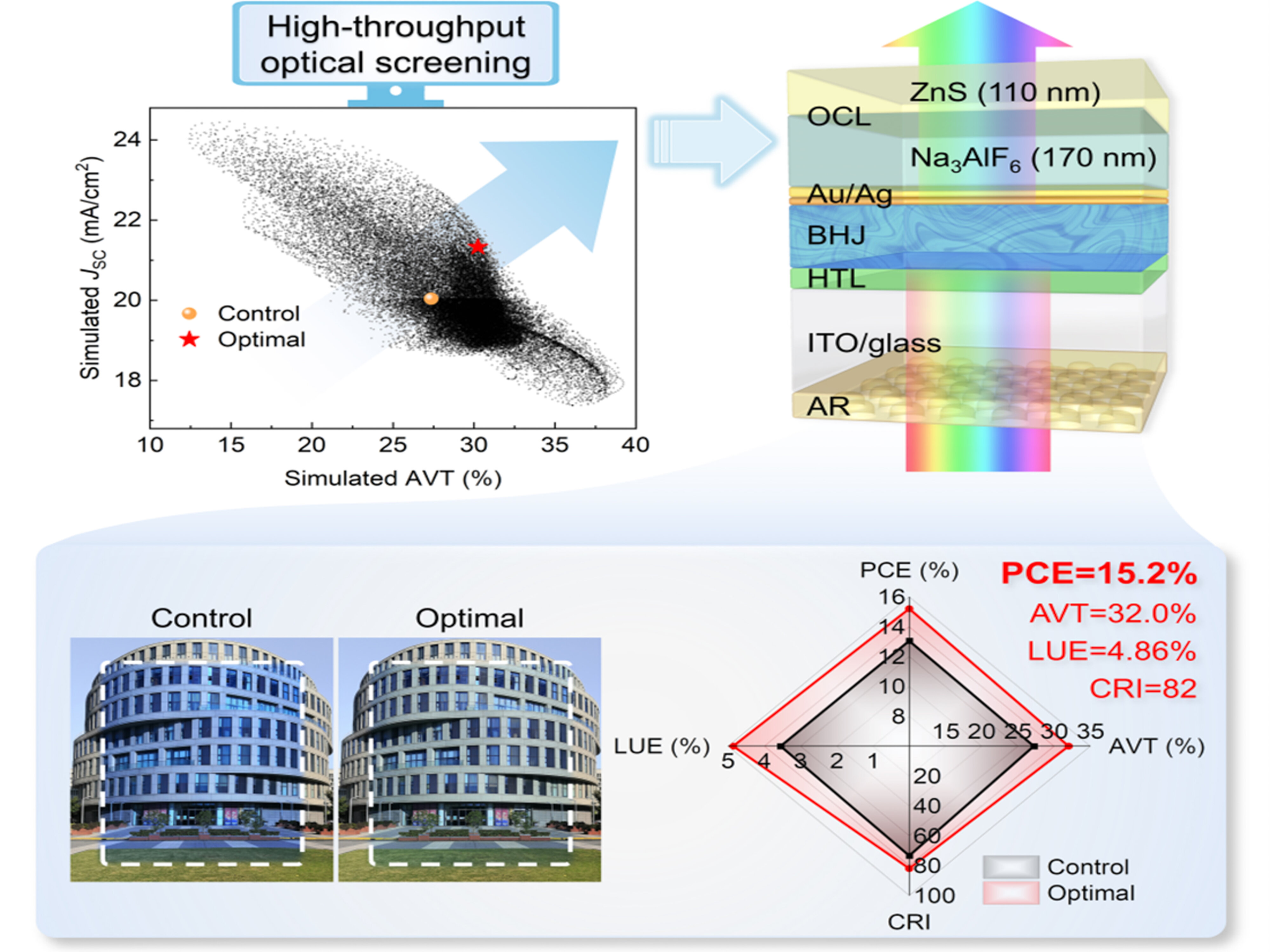

Generation of renewable energy
In February 2023, solar photovoltaic panels were installed on the campus to generate renewable energy. As of 30 June 2023, this initiative has already generated approximately 200,000 kilowatthours of renewable energy, resulting in a reduction of 97 tonnes in carbon dioxide emissions. Looking ahead, the projected annual renewable energy generation will reach about 450,000 kilowatt-hours, which could potentially reduce carbon dioxide emissions by about 175 tonnes. The solar photovoltaic panels project has also been officially recognised under the Renewable Energy Feed-in Tariff Scheme by CLP Power Hong Kong Limited.
To enhance engagement within the University community, real-time updates on energy generation performance and data are made available to the public through the HKBU website (https://hkbusustainability.hkbu.edu.hk/carbon-neutrality/renewable-energy.html). The information is also easily accessible to students and staff through the HKBU mobile app.
Five-year energy efficiency plan
In order to make significant strides towards reducing energy consumption and creating a more energy-efficient campus for the University community, the University has established a comprehensive five-year plan (2020-2025) focusing on enhancing building energy efficiency in both new and existing buildings. This plan involves the implementation of smart technologies to minimise energy use, as well as regular energy reviews to monitor and analyse energy consumption patterns.
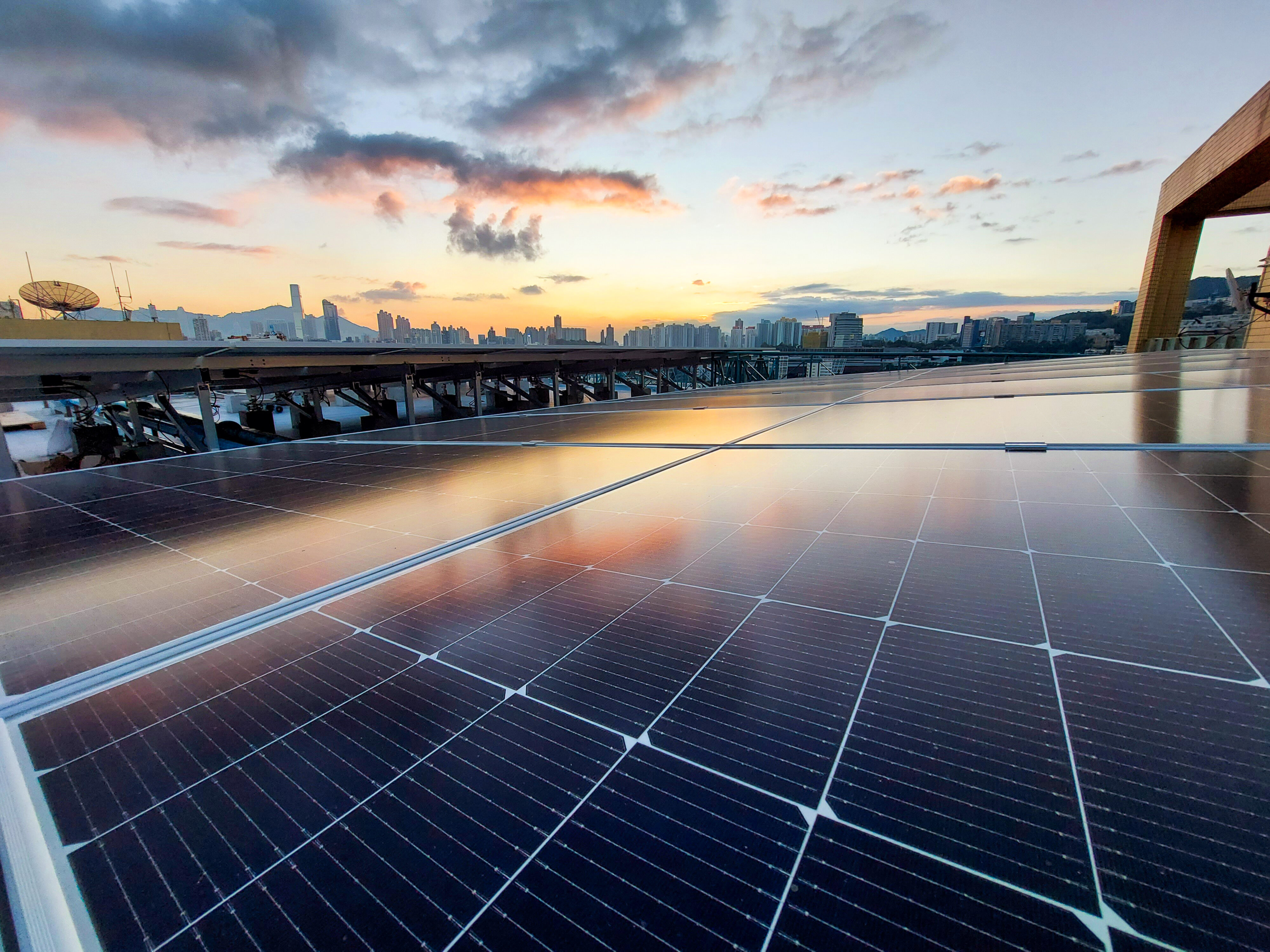

| 1. Upgrade buildings to higher energy efficiency | |
|---|---|
| Green Building Policy | The University implemented a University Green Policy for Capital Projects and Major Addition and Alteration Projects for University Campus in November 2021. The Policy mandates that all new building and major renovations shall meet environmentally friendly standards, achieving a “Gold” or higher rating under the BEAM Plus assessments certified by the Hong Kong Green Building Council. Additionally, a minimum of 2% of the construction cost shall be allocated for installations and associated expenses for capital projects and major renovations costing over HK$50 million for such purpose. |
| Retrofitting & Retro-commissioning (RCx) | The University has been retrofitting existing buildings to improve
energy efficiency and reduce energy consumption. This includes
replacing traditional light fittings with LED ones and upgrading 13
central air conditioning units to more energy-efficient models. The University has enlisted external RCx professionals to analyse the energy performance of campus buildings and identify opportunities for optimising energy usage, reducing energy costs and improving the indoor environment. As an example, retro-commissioning and sequencing were applied to the chillersystem, resulting in an increase in operational efficiency. The above improvements are estimated to save approximately 1,000,000 kilowatt-hours of electricity annually, which is equivalent to reducing around 400 tonnes of carbon emissions. |
| 2. Plan to reduce energy consumption | |
|---|---|
| Smart technologies for Building Management System | With the aim to further reduce electricity consumption, the University is evaluating the feasibility of implementing a smart campus system which utilises Internet of Things (IoT) technologies including data analytics, smart control of equipment and optimisation of equipment performance. |
| Smart housing management at student residence halls | To raise the awareness of residents about energy conservation and sustainable solutions, the University is assessing the viability of implementation of smart housing management at the Student Residence Halls. |
| Smart classrooms project | In 2023, all 67 planned classrooms have been converted into smart classrooms. This transformation involved upgrading the audiovisual equipment and installing motion sensors to control the lighting and air-conditioning, allowing convenient on/off functionality. |
| Occupancy sensors at open-plan office | In all newly renovated open-plan offices, occupancy sensors will be installed to enable smart control of lighting and air-conditioning system, which could ensure efficient energy usage and create a more comfortable working environment. |
| Fume cupboard replacement | 50 fume cupboards were replaced with energy-efficient models with better motor efficiency and automatic sash closers to minimise air flow and conserve energy, resulting in an estimated annual electricity saving of 500,000 kilowatt hours (-58% or equivalent to approximately 200 tonnes of carbon emissions). |
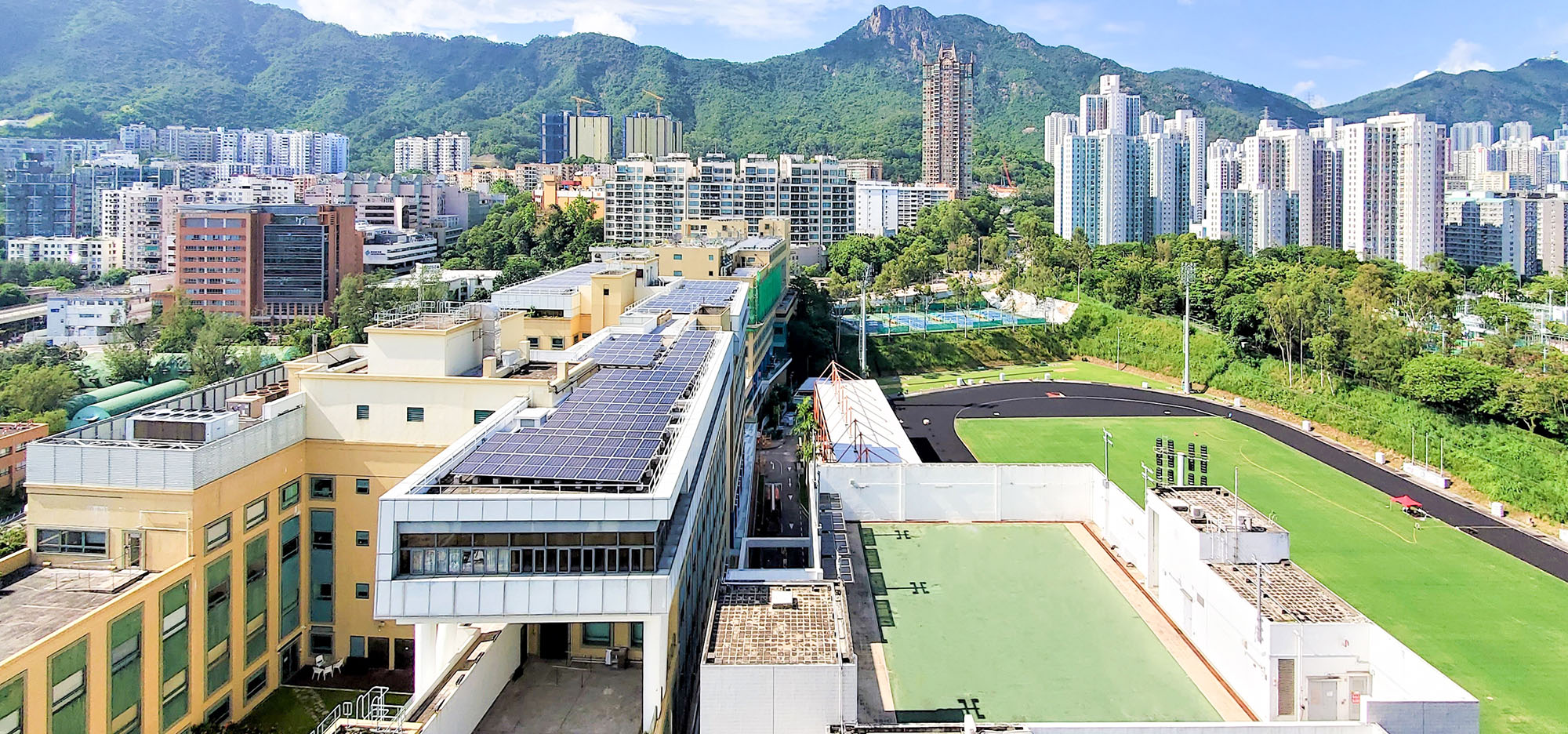

| 3. Carbon reduction and energy wastage identification | |
|---|---|
| Periodic external energy audit | Energy audits are planned to be conducted for all buildings on all campuses in a rotational manner, with the goal of completing this process by 2025. |
| Annual internal carbon audit | A yearly carbon audit is conducted internally to keep track of carbon emissions and identify areas for improvement. |
| Review of hours of supply of air-conditioning | With the review conducted on the air-conditioning supply hours for offices and laboratories, the default air-conditioning supply hours for all non-academic office premises on campus are reduced by 10 hours per week. |
| Review of temperature setpoint | After reviewing the indoor temperature setpoints, the default lowest summer indoor temperature setting was adjusted from 22°C to 24°C on the University premises, except for those spaces with special needs. |
Performance indicators against baseline year
Compared to the baseline year of 2016-17, all performance indicators have shown improvement as a result of the implementation of various sustainability policies and projects.
| Performance indicators | 2022-23 against baseline year (2016-17) | |
|---|---|---|
| Greenhouse gas (GHG) emissions | Per GFA (tCO2e/sq.m.) | -27.97% |
| Per capita (tCO2e/FTE) | -34.55% | |
| Energy consumption | Per GFA (kWh/sq.m.) | -7.51% |
| Per capita (kWh/FTE) | -15.95% | |
| Water consumption | Per GFA (c.m./sq.m.) | -20.60% |
| Per capita (c.m./FTE) | -27.90% | |

